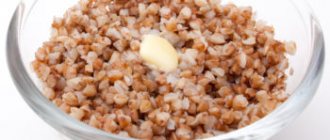Have you ever wondered why some people like sour and salty, while others like sweet or bitter? We feel taste through our taste buds. There are about 10,000 of them in the mouth of an adult. Small children have more taste buds. Therefore, babies perceive tastes more acutely and are often more picky about food than their parents.
Photo: depositphotos.com. Author: shalamov.
Are you sure you are eating the food you choose? Modern research proves that genes determine our choices. And everyone's taste sensitivity is different. Today, scientists are seriously studying the genetically determined food preferences of people: some people will like fried potatoes all their lives, while others only like to enjoy mashed potatoes.
When talking about the nutrition of a 2-year-old child, we must not forget the above facts. We are all different, and we need to respect everyone's differences. By this age, a child can do a lot on his own; he develops character and understanding of the world around him. Food preferences and habits continue to form.
If parents care about the development and upbringing of the baby, then the issues of proper nutrition of the child do not go unattended. The famous doctor Komarovsky writes: “Feeding a baby with high-quality, varied food is a prerequisite for the moral well-being of parents...”
What does “proper nutrition” mean?
In the second year of life, the child continues to transition to the general diet accepted in the family. But there is no need to go to extremes. When preparing a dish for everyone, a mother can put the food for the baby in a separate saucepan and only then add salt and spices. This is especially true if, for example, dad loves spicy and peppery foods - such culinary delights can harm a growing body.
You need to decide whether to feed your baby canned baby food from jars or home-cooked meals. There are supporters and opponents of canned food. Some prefer the ease of use of industrial baby food, others insist on the need to include only fresh foods in the child’s diet.
Food should not be crushed too much. However, do not forget that the size of the food pieces must be increased little by little. The principle of gradualism should also be observed when introducing new products: first, let’s try a small piece, monitor the reaction and, if it is positive, after a while we include the new product in the menu.
For children of the second year of life, fried foods are not allowed. You can boil, stew, bake, but not fry. The gastrointestinal tract of a child under 3 years of age cannot cope with the digestion of heavy food on its own.
Equally important is that you are the one who shapes your child’s eating habits. If you don’t see anything wrong with fried food, then your child will borrow your food preferences. We raise a two-year-old little man not with words, but with our own example. Therefore, try not to eat in front of your child what you do not give him.
our nutrition from 2 to 3 years
Daily amount of food: for children from 2 years to 3 years - 1300 g
1) Breakfast: porridge 200 g + fruit puree 100 g = 300 g
2) Lunch: soup 250 g (meat / fish*, vegetables, herbs) + sour cream 10 g + bread 50 g = 310 g
3) Afternoon snack: kefir 200 g / yogurt 200 g / + cookies or bun 10 g + juice / compote / fruit drink 100 g + fruits / dried fruits 50 g = 360 g
4) Dinner: porridge with milk / macaroni with cheese / mashed potatoes + fish or meat... or... vegetables in various forms (including with egg) 300 g
5) Before bed: cottage cheese / berry milkshake 100 g
The child should receive vegetables, fruits, potatoes, sugar, bread, meat, and milk daily in accordance with the daily physiological norm.
Cheese, cottage cheese (50 grams per day), sour cream, fish, eggs, chickens are given several times a week based on their weekly norm
Milk and dairy products continue to occupy the dominant place in a child’s diet (600 g per day, taking into account the amount used for preparing various dishes). Fermented milk products (especially kefir - up to 200 g per day) are useful
Market cottage cheese is consumed only after preliminary heat treatment - i.e. mother's cheesecakes are possible))) Mild and low-fat cheese (daily allowance 3 grams) is given to children in the second year of life in grated form, using it for sandwiches mixed with butter, or adding it as a seasoning to pasta dishes; at the age of 3 years - a piece for a sandwich. Based on the weekly norm (20 g), it is included in the children's menu 2 times a week.
In the third year, milk sausages, sausages, low-fat varieties of boiled sausages, lean varieties of boiled ham are allowed occasionally instead of meat (daily allowance 8 grams) - it’s better not to))) Liver (we prepare it in the form of a soufflé). Meat: young beef or veal, turkey, chicken, rabbit, quail, lean pork, venison or elk)
Instead of meat, it is advisable to give your child fish several times a week . Its daily allowance is 25 g. For preparing dishes, you can use the weekly allowance of fish (175 g). The best river fish is trout. From the sea - hake, cod, perch, etc.
vegetable oil (daily intake 6 g) to children mostly raw, adding it to vegetable purees and salads. The child receives fats of animal origin with sour cream (daily intake 10 g) and butter (daily intake 17 g). pork lard is more digestible . Children aged 2-3 years can consume it in small quantities 1-2 times a week link to source
Carbohydrates in a child's food come mainly from a variety of vegetables, fruits, berries, cereals and dairy dishes.
The child’s diet must include fresh fruits (daily allowance 130 g): kiwi**, persimmons, bananas, apples, pears, tangerines*** After 2 years, you can give a piece of watermelon or melon. Lunch ends with a dessert of fruit or berry juice, pureed fruit or berries, compote, and occasionally jelly, refreshed with natural fruit or berry juice. Don't forget about dried fruits
The daily allowance of potatoes for children 2-3 years of age is 150 g (about 2 medium-sized potatoes), other vegetables - 200 g (white and cauliflower, broccoli, green beans, carrots, beets (both raw and baked and boiled form), onions, radishes, lettuce, pumpkin, zucchini, eggplant, sweet peppers, tomatoes, fresh cucumbers, turnips, green peas).
of bread per day. This is mainly white bread (60 g), only for lunch you can offer a piece of black rye bread (30 g).
The daily allowance for sugar for children is 50 g, for confectionery - 7-10 g. Children quickly get used to sweets and are drawn to them, although they do more harm than good. Chocolate and products containing it are completely unacceptable for children under 3 years of age. They overstimulate the child’s nervous system, often cause allergies, and slow down intestinal motility.
In the 3rd year of life, children’s diet can include dishes made from flour (pancakes, pancakes, pancakes). All confectionery products should be given only after the next meal.
All dishes are prepared without the usual seasonings for adults (bay leaf, pepper, fried onions, tomato sauce and other spices). You need greens: onions, celery, spinach, parsley, dill.
Egg norm : 0.5 per day
Sauerkraut and pickles can be used in limited quantities.
Although a child, as a rule, eats more willingly in the presence of peers or adults, it is not advisable to seat him at a common table during lunches and dinners. He will be distracted, reach for adult dishes, and refusal to fulfill his desire will disrupt the calm atmosphere of feeding and affect his appetite. You should not start feeding your baby immediately after sleep. A long stay in a warm bed, as well as high room temperature, inevitably reduces the secretion of digestive juices and appetite.
___________________________________________________________________________________________________
* fish broths are undesirable for children under 3 years of age (from the magazine “Mom, It’s Me”). **Kiwi should not be given to children under 1.5 years of age - there is a risk of allergies
*** tangerines after 1.5 years can take 2-3 slices a day (if there are no allergies)
Balance of BZHU
BJU is proteins, fats, carbohydrates. Their ratio in the second year of life is the same as in the first: 4 g of carbohydrates account for 1 g of protein and 1 g of fat. If this proportion (4:1:1) is observed, the child’s nutrition is considered optimal.
- carbohydrates - cereals, vegetables, fruits, bread;
- proteins - meat, fish, dairy products;
- fats - vegetable and butter oils, fats contained in products mainly of animal origin.
What carbohydrates to include in your diet
Vegetables and cereals are products with high nutritional value. Dishes based on them must be included in the family diet. Then you will not have problems preparing food especially for your child.
You can safely offer your child a variety of vegetables and fruits if there is no allergic reaction. Give preference to fruits from your climate zone.
There is an opinion that children under three years old should not be given peas, beans, etc. Dry and canned legumes should be excluded from the diet of a two-year-old child. But you can make puree soup from fresh, young legumes to facilitate absorption.
Unfortunately, in many families the tradition of daily cooking of porridge and vegetable dishes has been lost. By depriving ourselves and our children of this simple food, we leave the body without a large amount of useful substances. And we prepare the ground for problems with digestion and elimination of waste from the body.
If protein and fatty foods predominate in a child’s diet, and there is not enough plant fiber, the baby will suffer from constipation. Another cause of constipation can be a lack of fluid. From an early age, you need to teach your child to drink clean water without any additives. Lemonade is a prohibited drink not only for children 2 years old, but also older.
What kind of meat should I give my child?
Low-fat. It could be beef, rabbit, chicken or turkey. Don't rush to give pork. Try not to season meat with sauces. Strive to preserve the natural taste of products.
Do not give your child pure meat broth; use it as a base for soups. But skim off the fat first. Of all the soups, borscht is considered the healthiest.
No one disputes the inclusion of fish in the diet of a 2-year-old child. It is digested faster than meat, it contains many useful microelements, and the load on the pancreas is less.
Fish can be either river or sea. Don't give your child seafood. At an early age it is a strong allergen. When including fish in your 2-year-old child's diet, make sure that there is no allergic reaction to it. Do not rush to offer caviar and delicious fish to the fidget.
If the child can chew well, cut the meat and fish into pieces, but without bones.
Milk controversy
Dairy products must be included in the diet. It is better if it is fermented baked milk, kefir or low-fat sour cream.
Cheese and cottage cheese should appear on the menu of a two-year-old child at least 3 times a week. The daily allowance of cottage cheese is no more than 50 g. It is safer if you make lazy dumplings, cheesecakes or casserole from it. It is useful to cook such dishes by steaming or in a slow cooker without adding oil. Raw cottage cheese must be fresh and purchased from a trusted seller. Remember that store-bought cottage cheese from jars and boxes is nothing more than a dessert.
Experts say that whole milk is harmful for children under 3 years of age. Balanced milk formulas can replace it. But not all parents follow this recommendation, and this is their right.
Vegetable and animal fats
Vegetable oil and butter are sources of fat, which should also be present in the two-year-old’s menu. Butter can be added to porridges, purees, vegetable dishes, and vegetable oil can be used to dress salads, such as vinaigrette. Do not use margarine or spreads in baby food.
Harmful sweets
This is a source of fast carbohydrates. Often parents, having heard about the dangers of sugar, try to exclude sweets from their child’s diet.
Of course, the later children learn the taste of store-bought sweets, the better. Small portions of marshmallows, marshmallows, marmalade without dyes based on natural juices, and homemade cookies are allowed.
Let sweets be not a daily treat for your baby, but only a holiday treat. The ban includes lollipops, pastries, chocolate, cakes, corn sticks, etc.
about harmful sweets for children.
Which meat to choose
The diet of a child over 2 years old is much wider than that of children aged about 1 year, but still the menu cannot yet include many “adult” dishes. When choosing meat, you should pay attention to the amount of fat it contains. Fatty varieties are too “heavy” for the baby’s gastrointestinal tract and can negatively affect normal digestion and even the health of a small child. Complete elimination of fat is also not good for a growing body! The best option is beef of category II (with a small amount of fat). A significant percentage of fat is contained in pork and lamb, so this type of meat should be completely removed from the child’s diet or very rarely included in the menu. Dishes for children can be prepared from rabbit meat . It is well digestible, contains many useful substances, has an optimal ratio of proteins, fats, carbohydrates and is usually palatable to children of any age.

Children over 2-3 years old can include poultry meat , but individual intolerance should be taken into account. For example, chicken often causes an allergic reaction, so it cannot be used in the diet of some children. In general, poultry meat can be compared to beef in nutritional value. It does not have a large amount of fat and is easily absorbed. In terms of nutritional properties, chicken and turkey are the most optimal for a child. Great care should be taken when handling waterfowl meat. The meat of geese and ducks is much less digestible, often has a higher fat content, and is tougher, which causes difficulties in cooking. Such dishes should not be present in the diet of preschool children.
Diet
From the age of two, you can introduce 4 meals a day: breakfast, lunch, afternoon snack and dinner. Experts say that the baby should eat at least 4 and no more than 5 times a day.
Try to follow the recommendations of professionals, but without fanaticism. After all, at two years old the child enters the first crisis of childhood. The baby has realized himself as an individual and is testing the boundaries of his capabilities. “No!”, “I don’t want to!”, “I won’t!”. Refusal of previously loved food, categorical demands for sweets, foot stamping, even hysterics - a child’s struggle for his territory. Distract and redirect the fidget's attention, hug him or, on the contrary, step aside, speak in a whisper to surprise him. Just don't humiliate or use violence.
By the age of two, a child has developed his own food preferences, and his favorite and least favorite foods appear. An adult eats what he wants and when he wants. So why do we deny this right to the baby? Fantasize and play, don't get angry, don't get annoyed. Don't break your personality, but help him grow up.
Basal temperature from A to Z
ARE THERE ANY BENEFITS IN MILK AFTER A YEAR? Breastfeeding after a year? Often, nursing mothers are told that there is supposedly nothing useful in milk after a year, and therefore they need to wean their babies. I would like to draw the attention of nursing mothers that this is a misconception that is unsafe for the health of your babies. When someone tells you this, don’t take it for granted simply because the person who said it is your relative or, for example, a doctor. Unfortunately, today many doctors do not have sufficient knowledge of breastfeeding and do not feel the desire to fill this gap. This situation is not unique to Russia - the same thing is happening abroad, which has necessitated the emergence of such a profession as a lactation consultant, who collects information on breastfeeding and shares it with those who need it. If someone tells you that after a year there is nothing useful in breast milk, ask how the speaker knows this. Ask if he knows about the WHO recommendation to continue feeding until two years, and what caused the recommendation of the most authoritative medical organization, if there really is nothing healthy in milk. Finally, ask how it turns out that up to 6 months milk was so useful that it replaced any other food, and at one year it suddenly suddenly stopped being useful...? Fortunately, not all doctors rely on the long-outdated recommendation of 60-70- x years “we feed until a year and no longer.” Many today encourage mothers to continue breastfeeding, based on data that is available to anyone who is in any way interested. Here are some of these data.? Not only abroad, but also in Russia, there are many studies that have proven the benefits of mother's milk at any stage of feeding. Indeed, after a year, breast milk changes its composition, but not for the worse. The main reason for these changes is that milk is no longer the main food for the baby, and other functions come to the fore. The older the child gets, the more the concentration of immunoglobulins in milk increases, which protect the child from diseases. Breast milk contains leukocytes and a number of anti-infective factors, as well as antibodies against pathogens previously transmitted by the mother. It was found that infants aged 16 to 30 months had fewer illnesses and their illnesses were of shorter duration than their non-infant peers (Gulick 1986 study).? And, for example, the American Academy of Family Physicians specifically draws attention to this It is a fact that if children are weaned before two years of age, the risk of any childhood diseases increases greatly. The Mother and Child Project (John Snow, Inc., 2003) states that breastfeeding protects children up to 2-3 years of age from some forms of diarrheal diseases, such as cholera and shigellosis, as well as from other infections, such as otitis and meningitis.? The optimal composition of human milk forms such features of fat, carbohydrate, mineral and energy metabolism, which provide optimal conditions for the physical and intellectual development of the child, longevity, social adaptation, and reduces the subsequent risk of developing atherosclerosis, hypertension, obesity, diabetes diabetes, leukemia and chronic intestinal diseases (Fewtrell, 2004; Global strategy on diet, physical activity and health, 2004). Immune support from mother's milk is never superfluous for children. But, besides this, milk remains a valuable source of proteins, fats, calcium and vitamins. Thus, in the second year of feeding, the usual daily dose of milk that a breast-fed baby receives (on average 448 ml) provides 43% of the protein requirement, 36% of the calcium requirement, 75% of vitamin A, 94% of vitamin B12 and 60% of vitamin C (Research by Dewey 2001). According to other data, the vitamin A content in a daily serving of milk can vary from 38 to 75% of the daily requirement, and the vitamin C content can reach up to 95% of the daily requirement, depending on the mother’s diet. But in any case, as the WHO breastfeeding guidelines and the “Mother and Child” course teach Russian doctors: “breast milk remains an important source of energy and high-quality nutrients for the child during the second year of life and beyond. Breastfeeding protects the baby from xerophthalmia (vitamin A deficiency). Breastfeeding is especially beneficial for babies prone to allergies. The substances contained in mother's milk create a kind of barrier in the intestines for potentially allergenic molecules. In addition, the anti-inflammatory properties of breast milk reduce the risk of infectious diseases, which themselves act as allergy triggers. Breastfed children are less likely to develop allergic diseases: food allergies, allergic bronchitis and bronchial asthma (Guide for doctors “Protection, support and encouragement of breastfeeding in medical and preventive institutions for obstetrics and childhood”, Ministry of Health, 2005).? Long-term feeding promotes the correct formation of the maxillofacial skeleton, teething, development of the facial apparatus, and reduces the incidence of malocclusion. According to a Johns Hopkins study, children who breastfed for less than a year had malocclusions 40% more often than children who continued to breastfeed. Research by Russian doctors also says unequivocally: “The longer a child is breastfed, the less likely it is that the bite will develop incorrectly and caries will occur. When breastfeeding up to 1.5-2 years, children extremely rarely experience dental and speech therapy problems” (Guide for doctors “Protection, support and encouragement of breastfeeding in medical and preventive institutions for obstetrics and childhood”, Ministry of Health, 2005).? Today it is becoming very fashionable to foster early independence in children, and premature weaning is seen by some parents as a means of making the child more independent. However, psychologists who are closely involved in the study of child development warn: premature forced separation can, on the contrary, provoke delayed emotional development and increase dependence on parents. Imposed independence turns into psychological isolation and abandonment. It is much better to give your child the opportunity to become independent when he is ready for it. This is well illustrated by the results of foreign studies: for example, one of them showed that the greatest achievements in school were among children who were fed longer. And another (study by Ferguson et al, 1987) showed that the longer a child is breastfed, the better social adaptation occurs later, at the age of six to eight. Both mothers and teachers admitted that long-fed children are much less likely to develop problem behavior. And Russian doctors, who undertook to study the effect of breastfeeding on the neuropsychological development of children, found that long-fed children show much better results even at two years, with tests of speech development, and at three years, during tests of the correct performance of skills (Dzhumagaziev A. A., Kozina T. F. and Rozhkova O. N. “The importance of breastfeeding and the psychological unity of mother and child for its neuropsychic development”) . The smallest number of cases of rude behavior, including antisocial behavior, was noted in the group of schoolchildren who received breast milk at the age of 11-24 months (Dzhumagaziev A.A. et al., 2004, 2005). But even if we do not count on long-term consequences , most breastfeeding moms agree that breastfeeding itself promotes feelings of love and intimacy. The feeling of tenderness that occurs when feeding a baby helps both mother and baby relax and calm down. Children older than one year are characterized by emotional instability, which has infuriated more than one parent. But if a mother can breastfeed her baby, the whole family will much more easily overcome the difficult time of age-related psychological crises.









